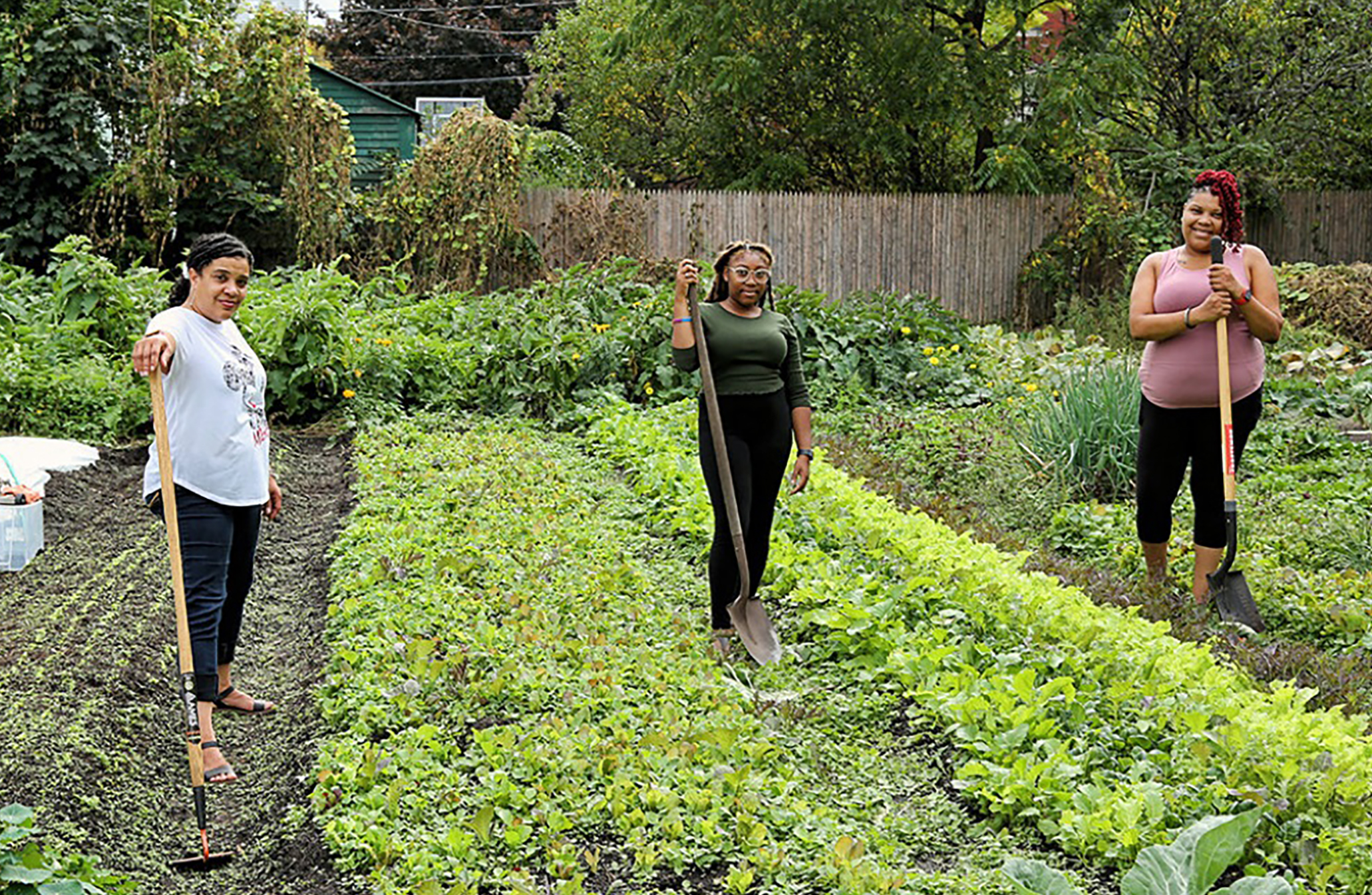
Clique aqui para Português
This is the latest in a series of articles about Community Land Trust (CLT) experiences around the world. On June 18 and 20, 2024 the 4th Annual Favela Community Land Trust National Seminar took place with the theme “Cultivating Sustainable and Resilient Communities.”* The online event was attended by 117 participants from various Brazilian states. The seminar explored and deepened several aspects of CLTs and their applications, with a particular focus this year on CLTs aimed at building environmental and climate resilience through the connections between land and community. In this article, we present the inspiring and innovative experiences shared at the seminar.
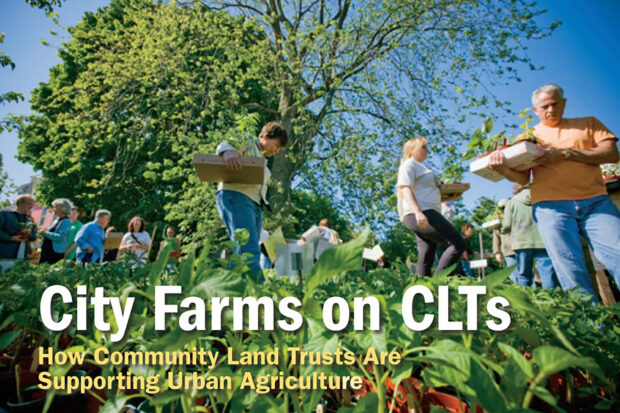
Community Land Trusts (CLTs) are experiencing rapid growth worldwide as a collective land management model. While traditionally focused on providing permanently affordable housing, CLTs are expanding their purview to support dignified and secure living more broadly. These initiatives range from incorporating urban agriculture to climate change mitigation. By managing the land with a community-oriented approach, CLTs enhance overall well-being and quality of life, fostering a strong sense of collective responsibility and shared stewardship.
In the context of urban agriculture, CLTs have proven to be an effective solution to the challenges posed by the pressure of real estate speculation in cities, which often hinder the use of urban spaces for farming. By ensuring that land use is determined by the community, CLTs provide access to land for cultivation if residents choose to do so, thereby enabling direct food production. This finding is highlighted in the report City Farms on CLTs: How Community Land Trusts Are Supporting Urban Agriculture.
According to the 2022 Census of CLTs, approximately 80% of these initiatives in the U.S. are actively implementing measures to address climate change. The actions being taken include improving energy efficiency through the use of renewable energy, restoring green spaces, and developing green infrastructure to mitigate the impact of disasters.
Therefore, there is a noticeable increase in the number of CLTs dedicated to creating green spaces within communities, such as parks and vegetable gardens. CLTs adopt a broad view of the concept of community, encompassing not just housing but also neighborhood relationships and solidarity networks.
Boston Farms and Dudley Greenhouse: Land Security Interwoven With Food Security
Boston Farms was founded in 2017 in Boston, Massachusetts, by the Urban Farming Institute, an organization dedicated to teaching and promoting urban agriculture practices. The CLT was established in response to residents’ interest in creating urban gardens and the availability of vacant lots that were not serving any social function. The CLT was created to acquire these unused lots and convert them into collectively managed spaces, training and supporting local farmers, primarily Black and Latino, in growing food.
Currently, Boston Farms operates five urban farms managed by residents. These farms generate income and supply food to their own communities. The CLT’s board of directors includes community leaders, local farmers, and project developers. Its strategic plan is designed to serve as a model for establishing and developing urban farms, with the goal of promoting these practices across the United States.
The story of Dudley Greenhouse illustrates the significant impact of a well-executed CLT. In a predominantly Black and immigrant neighborhood, Dudley Neighbors Incorporated (DNI) acquired an abandoned lot in 2004. After a public consultation with residents, the space was converted into a 10,000-square-meter greenhouse in collaboration with The Food Project.
Currently, around 200 Dudley CLT residents grow food in the greenhouse, which is managed by a community-elected board. The land, owned by the DNI and leased to The Food Project, is protected from real estate speculation. In addition to providing space for agriculture, the initiative offers classes, distributes seedlings and seeds, and organizes community fairs.
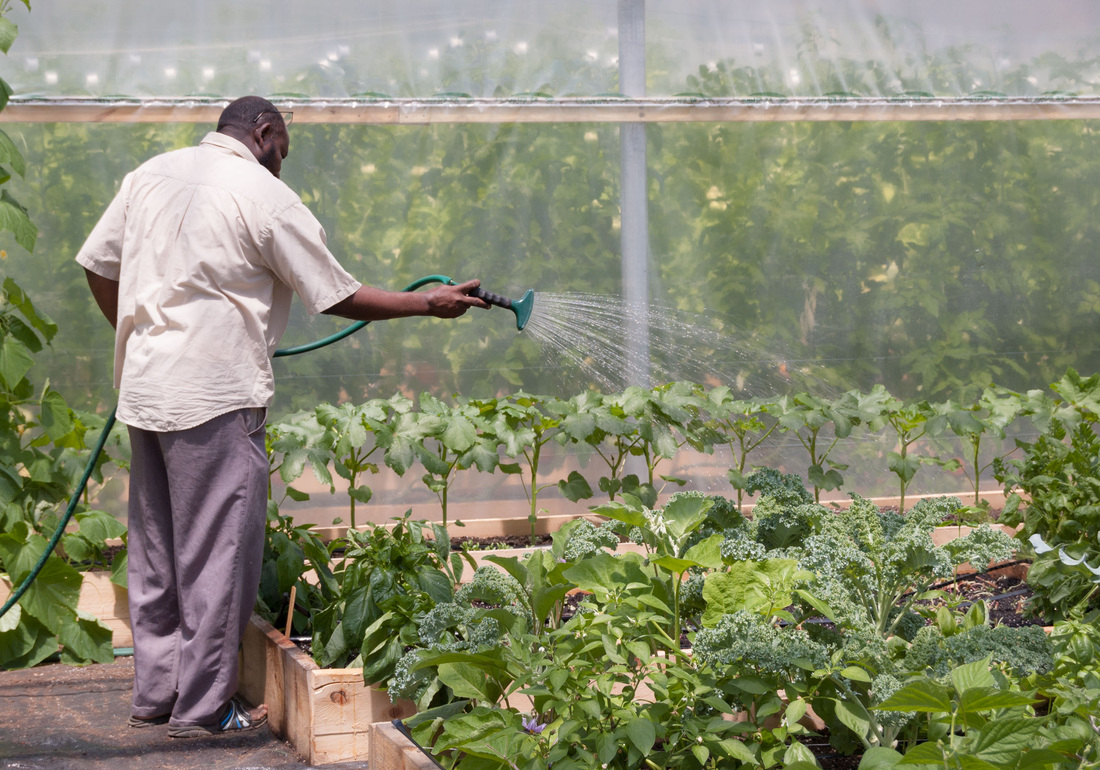
The Caño Martín Peña CLT in Puerto Rico: Collective Management Creates More Resilient Communities
The Caño Martín Peña CLT in San Juan, Puerto Rico, encompasses eight informal settlements along the Martín Peña Channel, which have been officially regularized through the CLT model. About 25,000 residents live there, maintaining a strong sense of belonging to the area despite historically facing challenges such as flooding and threats of evictions. In response to these persistent socio-environmental issues, the government proposed to dredge the canal in the early 2000s. This led residents and planners to organize over 700 meetings between 2002 and 2004, to address concerns about potential gentrification from the proposed upgrading projects and the initially suggested individual property titling.
Through this process, residents identified the potential, and chose the CLT as a land regularization solution to protect their right to housing. With over 2,000 families joining the CLT, the community’s land was permanently taken off the market, allowing residents to take ownership of local development resulting from government interventions.
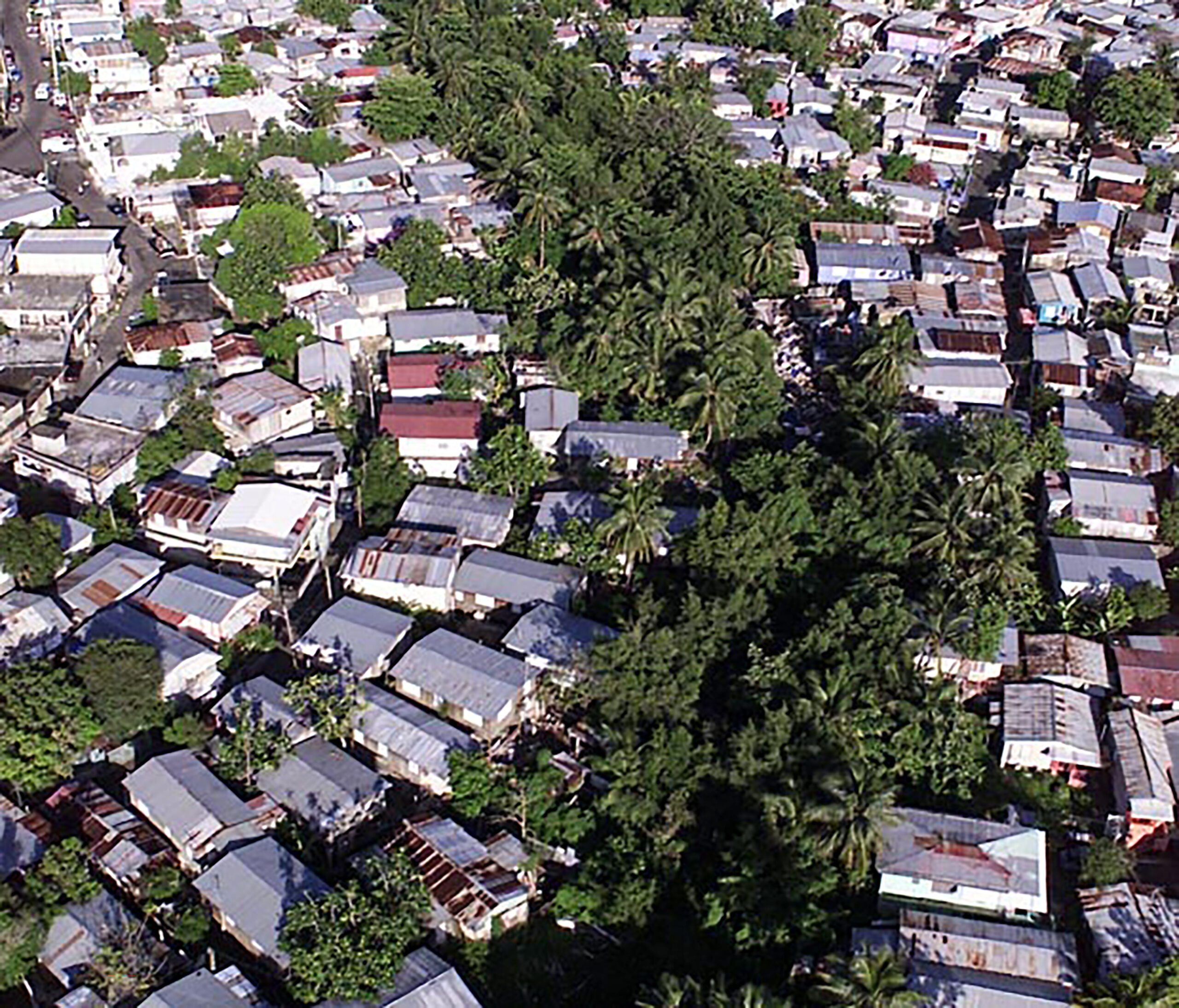
In 2017, Puerto Rico was struck by hurricanes Irma and Maria, which devastated the island, causing thousands of deaths and long-lasting damage. The Caño Martín Peña communities were severely affected, but the CLT’s established organization and collective movement allowed residents to respond quickly. This proactive approach helped minimize the worst damage and address community needs more effectively than other neighborhoods, including nearby formal ones. They quickly set up solar-powered Internet access points, raised funds to repair damaged roofs, and organized collective efforts to rebuild homes.
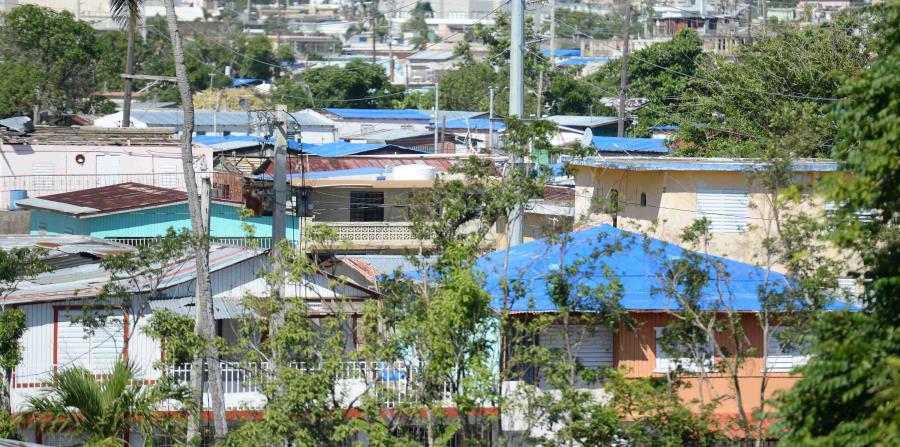
Fundación Eco Verde Sostenible: Collective Lands Safeguard Natural Resources
In the 1990s, communities in northwest Honduras constantly faced exploitative economic practices that led to the contamination of water sources, the seizure of communal lands, loss of biodiversity, and pollution, all of which severely impacted local livelihoods. Although national laws theoretically protected collective rights to natural resources, they failed to provide effective protection.
To safeguard water access in rural areas, the Fundación Eco Verde Sostenible (FECOVESO) was established in 2004. This CLT focuses on acquiring and preserving land around watersheds to benefit rural and mountainous communities, operating in a 60km² area in the northwest of the country. Its board consists of community representatives and technical allies, most of whom are volunteers. Key initiatives include reforestation, building and renovating health clinics, improving schools, and supporting teachers.
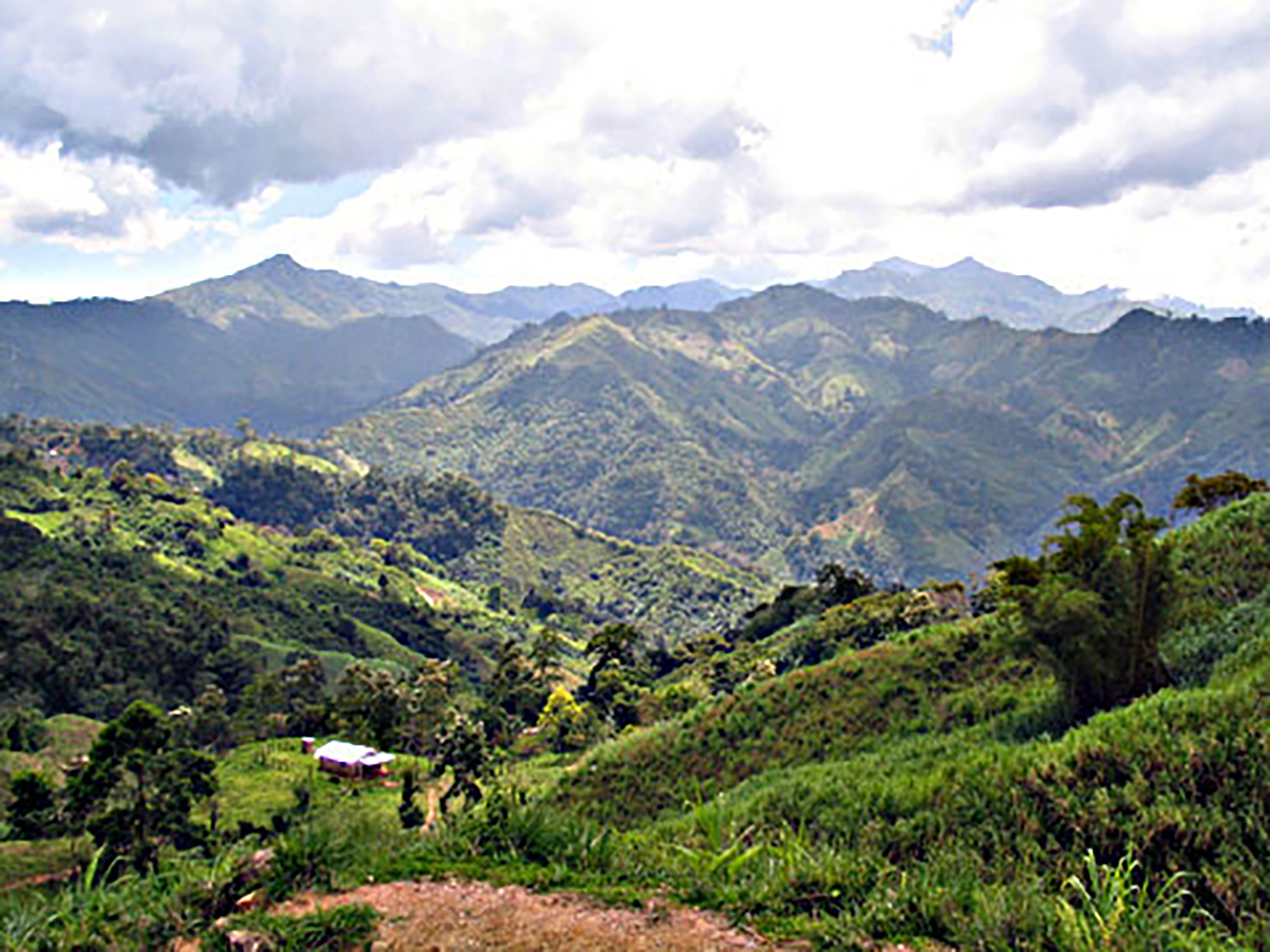
The Lahaina CLT in Hawaii Responds to Covetous Real Estate Speculation Following a Climate Tragedy
The Lahaina CLT in Hawaii was established in response to the devastating wildfire triggered by climate change in 2023, which destroyed much of the city of Lahaina. Although it is a recent initiative, it serves as a key example of how a CLT can be used to safeguard housing against climate-related risks. After the disaster, real estate speculators who had long eyed the area quickly moved to make purchase offers. Meanwhile, long-time residents and indigenous people faced increased vulnerability as they lost their homes. To counteract the potential for rapid gentrification and preserve the city’s cultural, historical, and environmental heritage, activists and residents came together to establish a CLT. The CLT acquired land to ensure that it remains permanently affordable to local residents.
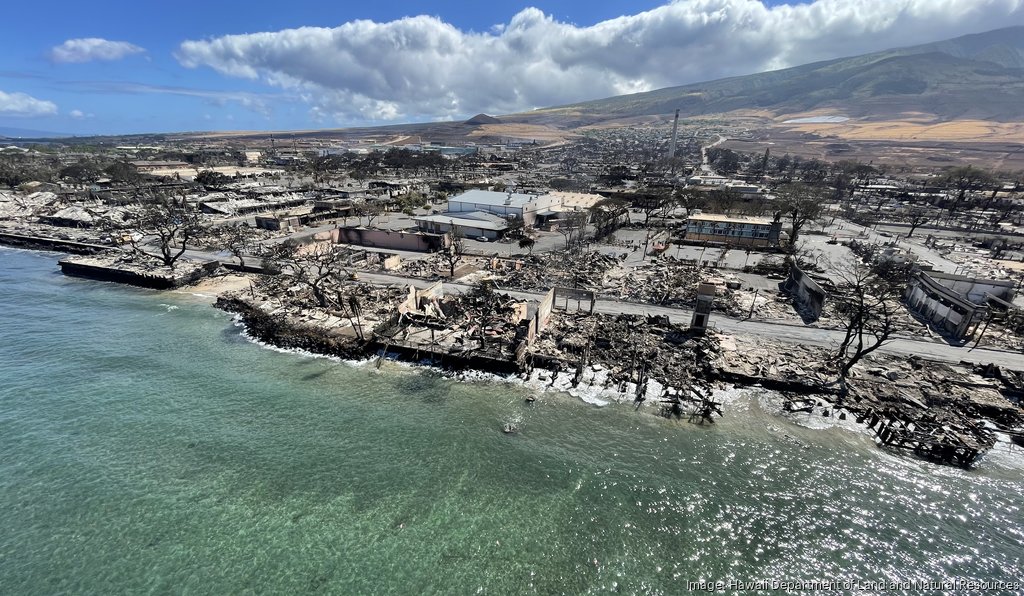
The Lahaina CLT’s primary mission is to rebuild homes destroyed by the fires on the island. It acquires land, renovates homes, restores the environment, and ensures residents’ security of tenure by removing the land from the market. Initially funded through donations, the CLT has also begun receiving federal grants from the U.S. government. Its board, comprised entirely of local residents, focuses on acquiring land with significant environmental or cultural value, always with the goal of preserving and restoring the environment.
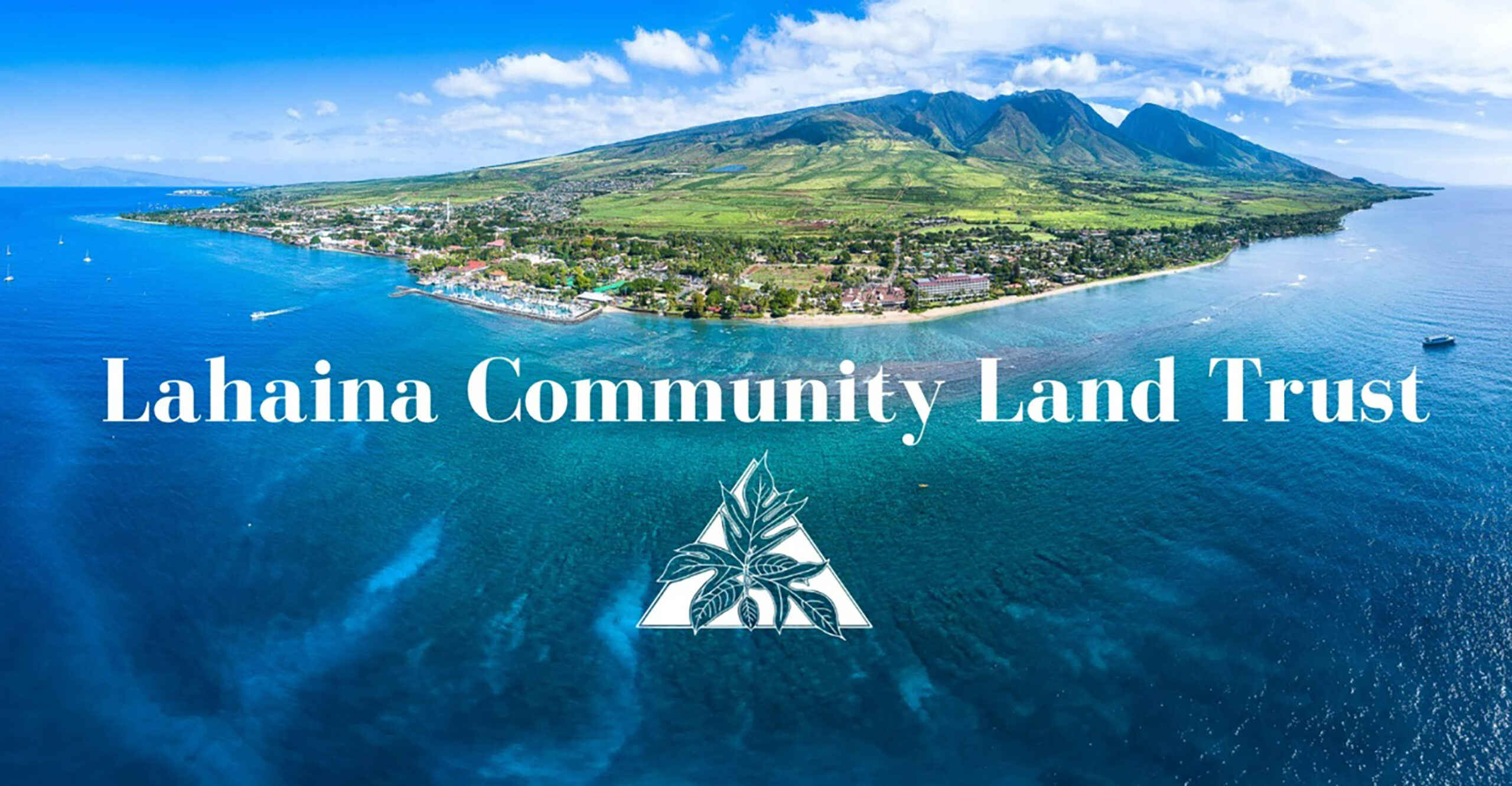
Terra Prometida: Housing Rights and Environmental Preservation Through Food Sovereignty
Although no CLT has yet been established in Brazil, the movement has been picking up speed. A member of the movement, Ana Santos, community organizer in the Terra Prometida favela and founder of the Serra da Misericórdia Integration Center (CEM)—an organization dedicated to agroecology in Serra da Misericórdia, the largest remnant of forest in Rio de Janeiro’s North Zone—sees the right to housing as inseparable from food sovereignty.
Drawing from the verse “like someone planting a seed, to see the food necessary for all living beings blossom,” shared at the 4th Annual Favela Community Land Trust National Seminar held in Brazil in June 2024, Ana ponders upon on her experience of working in a remnant of green space within Complexo da Penha, one of Rio’s largest favela groupings. She focuses on housing rights in the Terra Prometida area while also addressing environmental preservation. Ana challenges us with a series of reflections:
“What is it possible to do when you enter a green space you dream of preserving, but when at the same time, you need to live and work there?… How can we collectively grow food in Serra da Misericórdia? This was our approach to finding solutions based on a fundamental need: food… Thinking about the distribution of land, and how to go about it, what uses we would give to the land… Can we keep green spaces while homes expand every day?… How can we dream of dignified homes in a territory marked by [State] negligence… to this day, Terra Prometida isn’t even on the map. Food sovereignty was the viable path, managed by us, we wouldn’t depend on the government… the relationship between housing and food production builds dignity within the territory and for the residents… I plant, I harvest, I exchange, and I preserve.”
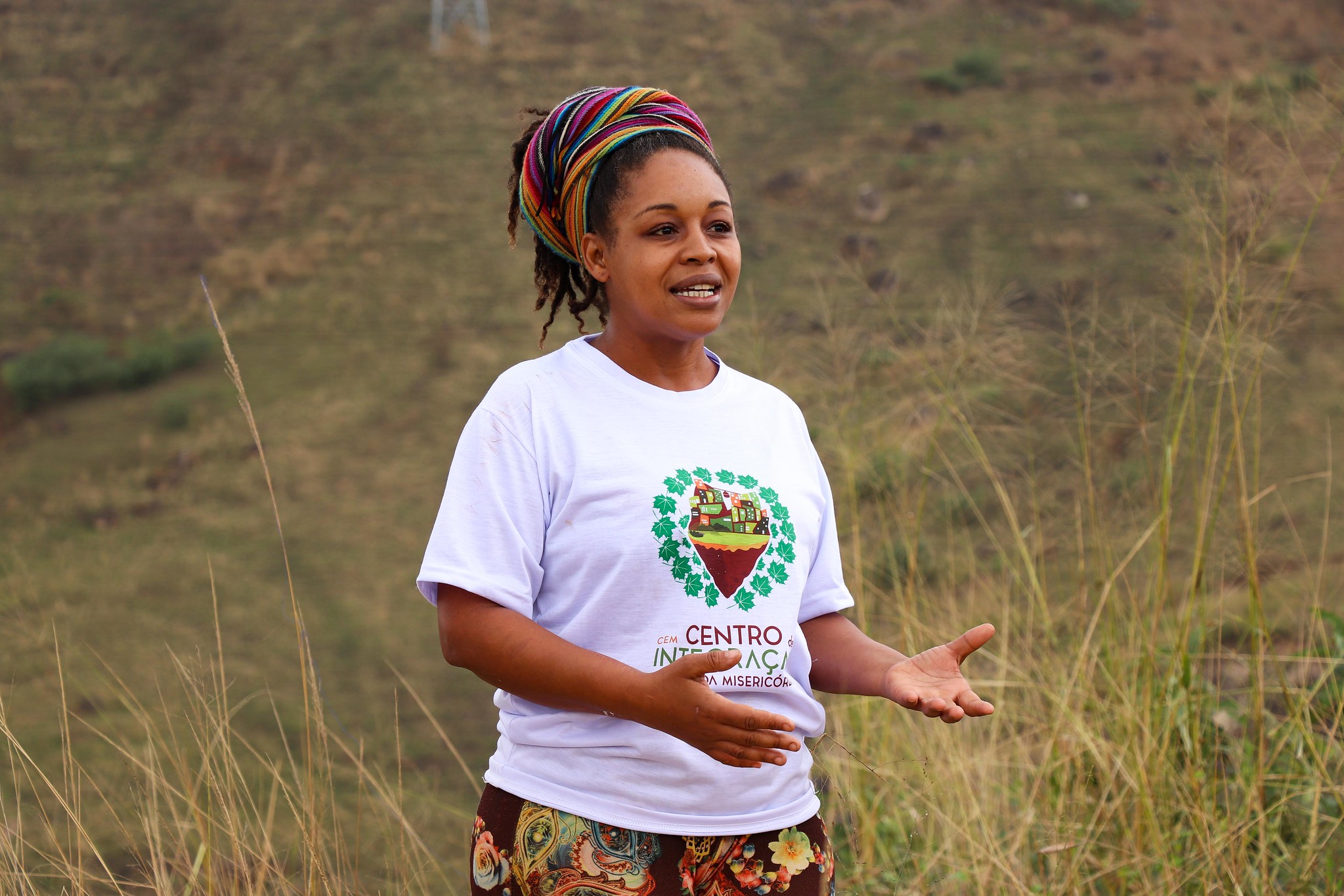
In Ana’s and her neighbors’ view, “you can’t separate food sovereignty from the right to housing.” Therefore, Terra Prometida is a place where homes are built, and food is planted and harvested.
“The CLT aligns closely with the agroecology movement, where residents recognize themselves through their own actions… The favela has always come together to build homes, lay concrete for rooftops; it’s always collected rainwater with pots and buckets; and there’s always been space for growing things—from boldo to bananas… The CLT within Serra da Misericórdia will make sure that green spaces are preserved, protecting our springs and wildlife… It will also bring back dreams of green spaces for both children and adults. The hoe in hand is for building, but it’s also for digging and planting seeds in the soil.” — Ana Santos
Watch the Presentation (in Portuguese) on These Experiences at the 4th Annual Favela Community Land Trust National Seminar by Felipe Litsek, Along With Remarks From Ana Santos of CEM:
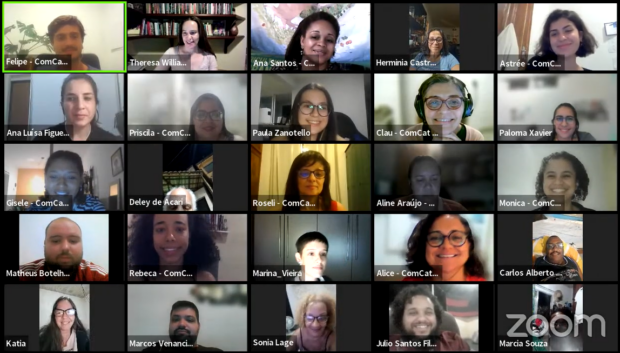
*About the 4th Annual Favela Community Land Trust National Seminar: The first day focused on “The Favela Community Land Trust and the Contemporary City,” addressing urban challenges and how Favela CLTs can help tackle systemic problems with local solutions. The session featured Orlando Santos Junior from Brazil’s Metropolis Observatory, João Pereira from the National Confederation of Neighborhood Associations (CONAM), and Marcos Landa from the National Movement for the Fight for Housing (MNLM). The second day’s theme was “The Favela Community Land Trust and Environmental Sustainability: Perspectives on Collective Land Management.” Felipe Litsek, Assistant Coordinator of the Favela CLT Project, presented the case studies described in this article. This session also featured Ana Santos from the Serra da Misericórdia Integration Center (CEM), quoted above.
Both RioOnWatch and the Favela Community Land Trust (F-CLT) Project are initiatives of the NGO Catalytic Communities (CatComm).
